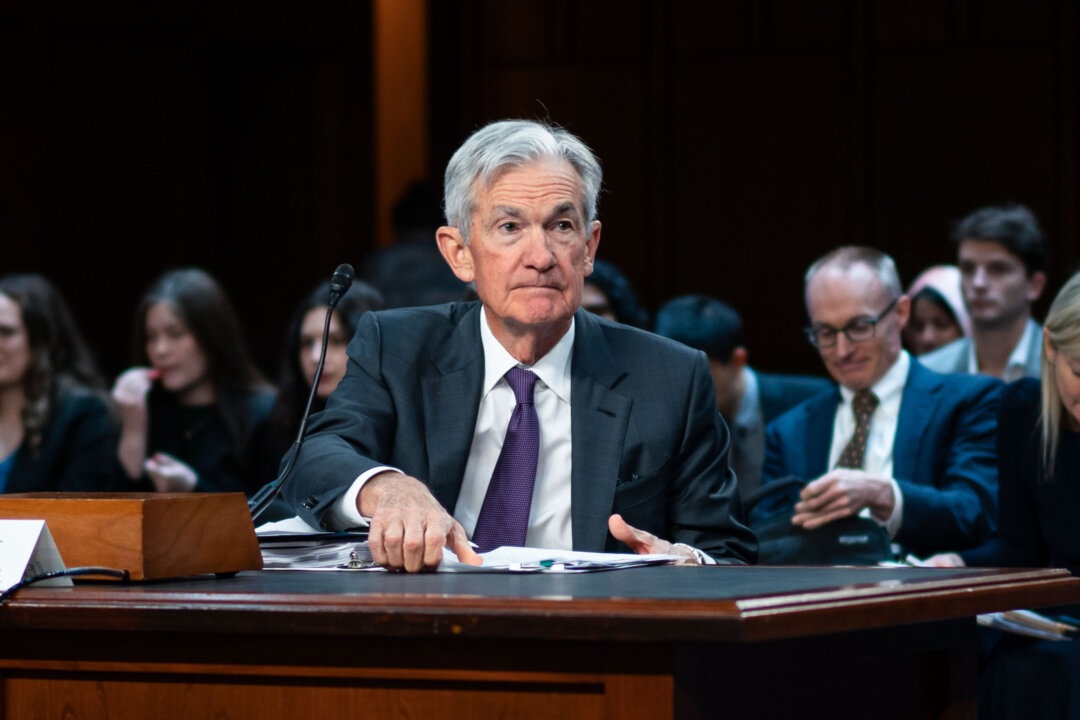Trump says Powell will remain as Fed chair until May 2026 as he continues pressuring the Federal Reserve to cut interest rates.
President Donald Trump said Tuesday he has no plans to fire Federal Reserve Chairman Jerome Powell, as the president continued his pressure on the central bank to lower interest rates.
“I have no intention of firing him,” Trump said on April 22 in the Oval Office, after a swearing-in ceremony for new Securities and Exchange Commission Chairman Paul Atkins. “I would like to see him be a little more active in terms of his idea to lower interest rates. This is a perfect time to lower interest rates.”
The remark marked a notable shift in tone after days of criticism. Just one day earlier, Trump called Powell “Mr. Too Late” in a social media post, accusing him of potentially slowing down the U.S. economy by keeping rates too high.
That post preceded a market selloff, with the Dow Jones Industrial Average dropping nearly 1,000 points before gaining it all back on Tuesday.
On April 17, Trump said Powell’s “termination cannot come fast enough” and told reporters that he could remove the Fed chair “real fast” if he wanted to.
By Tuesday, the president appeared to temper his stance—though his frustration with Powell’s reluctance to cut rates remained.
“[I’d] like to see our Chairman be early or on time, as opposed to late,” Trump said of Powell and the timing of future interest rate reductions. “Late’s not good.”
The Fed’s key interest rate currently stands in a target range of 4.25–4.50 percent, down a full percentage point from its post-pandemic peak of 5.25–5.50 percent. Futures markets expect the central bank to hold steady through May before potentially cutting rates at its June meeting.
Trump has repeatedly said that inflation is now under control, with falling prices for energy, food, and consumer goods. He said that rate cuts are needed now to prevent the economy from slowing.
Federal Reserve officials have pushed back. In an April 16 speech at the Economic Club of Chicago, Powell said the Fed is waiting for greater clarity on the economic impact of Trump’s sweeping tariff policies—including a 145 percent levy on Chinese goods and a 10 percent tariff on all imports. He warned that such trade measures could raise prices while dampening growth, complicating the Fed’s ability to meet its dual mandate of price stability and full employment.
During the speech, Powell also noted that federal law states that the president cannot remove a sitting Fed chair without cause. He said that the Federal Reserve’s independence is enshrined in law and broadly supported by both parties in Congress.
Some in the administration are reexamining that legal framework. On April 18, White House economic adviser Kevin Hassett told reporters that the issue of Powell’s removal was under review. He also acknowledged past warnings—outlined in his 2021 book—that firing a Fed chair could destabilize confidence in the dollar and the broader economy, though he suggested conditions had changed.
Meanwhile, a pending Supreme Court case could reshape the president’s authority to remove officials at independent agencies. The case involves Trump’s earlier efforts to dismiss appointees from federal labor boards, and some legal experts say a favorable ruling could extend to institutions like the Fed.
Speculation is also growing about who might replace Powell when his term expires in May 2026. Treasury Secretary Scott Bessent said in a recent interview that the White House will begin its search for a successor this fall.
While Bessent has floated the idea of naming a “shadow Fed chair” to provide forward guidance ahead of a transition, he has also said that Powell should be allowed to complete his term.
Andrew Moran contributed to this report.

